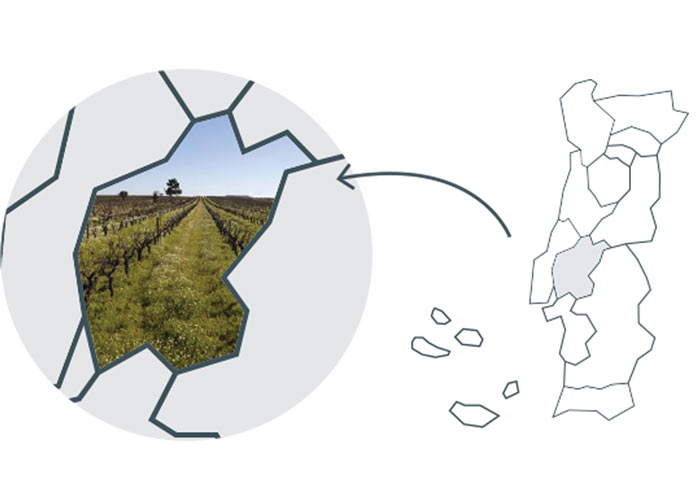Wine regions
Portuguese wine regions
Tejo
A bit of history
A long, long time ago, HRH D. Sancho II last will awarded: “to the monastery of Sr. George, some of my cows and sheeps, and half of my vines of Alvisquer, and the other half to my chancellor Duarando Forjas, as well as my cellar in Marvilla”. This will produced effects on January 4th, 1248, as Portugal’s 4th king passed away – many years before there was even a New World, as we know it, where wine could be drunk.
What to expect?
Mild weather has provided the region with soft wines, smooth and fruity. It is common to use foreign varieties in Tejo, such as Cabernet Sauvignon, Merlot or Syrah, which have produced interesting wines with a distinct personality and great gastronomical qualities.
Climatic and geological conditions vary greatly throughout the region. A lot of the vines grow, along with huge quantities of vegetables, on the wide, alluvial plain of the Tagus, in soil known as leziria, very fertile and frankly over-productive as far as quality wine is concerned – unless growers commit great attention and time to reducing their crops and pruning back the exuberant vegetation. Many growers deliver to large co-operatives.
Reds
Many producers have been blending national and international varieties, creating original wines with soft tannins, and complex aromas dominated by red fruits.
Common varieties: Touriga Nacional, Trincadeira, Cabernet Sauvignon, Castelão, Aragonez, Alicante Bouschet and Syrah.
Whites
Quite variable, given the great amount of grape varieties that are grown in the region. We find local Sauvignon Blancs a must-have.
Common grapes: Fernão Pires, Arinto, Trincadeira das Pratas, Verdelho, Sauvignon Blanc and Chardonnay.
Adapted from CVR Tejo.


